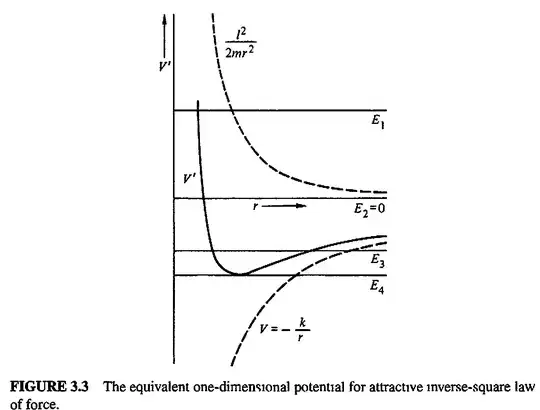The relevant figure is below (taken from Goldstein's Classical Mechanics). This figure plots the effective potential for a gravitational force. Does the effective potential $V'$ go flat below $E_2=0$? After finding $r_{flat}$, the point where the effective force $f'=0$ (or equivalently, where $V'$ goes flat), I got $$V'(r_{flat})=-\frac{mk^2}{2l^2}$$ Now, it looks like this is expression is negative since $m$,$k$, and $l$ are all positive. So my question is: Doesn't this result in a possible parabola that could have an energy less than $E_2=0$? I know it isn't possible for a parabola to have negative energy, so where am I going wrong in my reasoning?
Thanks..
